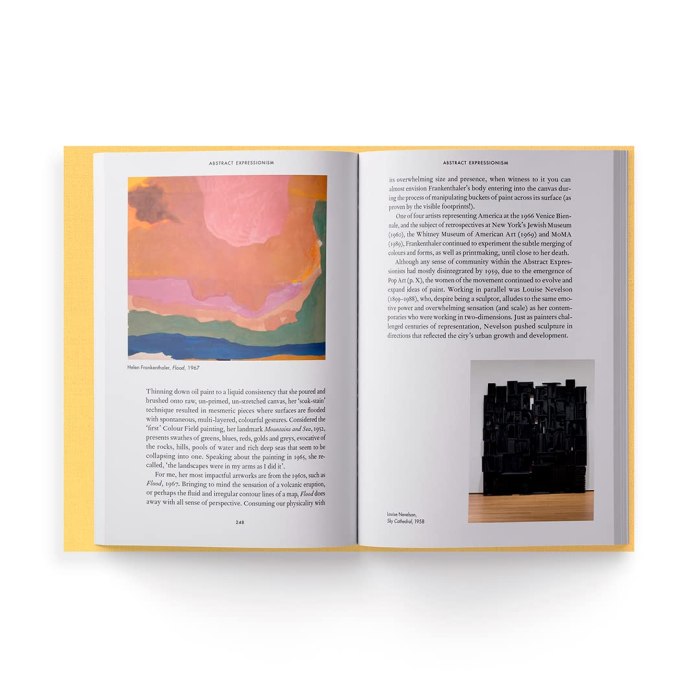Yo, art history, you’ve been on a serious #ManCrushMonday for way too long. It’s time to step back and see the amazing women artists who were basically erased from the textbooks. This ain’t about throwing shade, it’s about shining a light on the incredible talent and resilience of women artists throughout history.
Get ready to discover a whole new world of art, with a whole lotta sass and even more talent.
From the Renaissance to the present, women artists have been breaking down barriers and making their mark on the world. But their stories have often been silenced, overshadowed by the male-dominated narrative of art history. “The Story of Art Without Men” is a radical re-examination of this narrative, celebrating the voices of women artists and their contributions to the evolution of art.
The Absence of Men in Art History
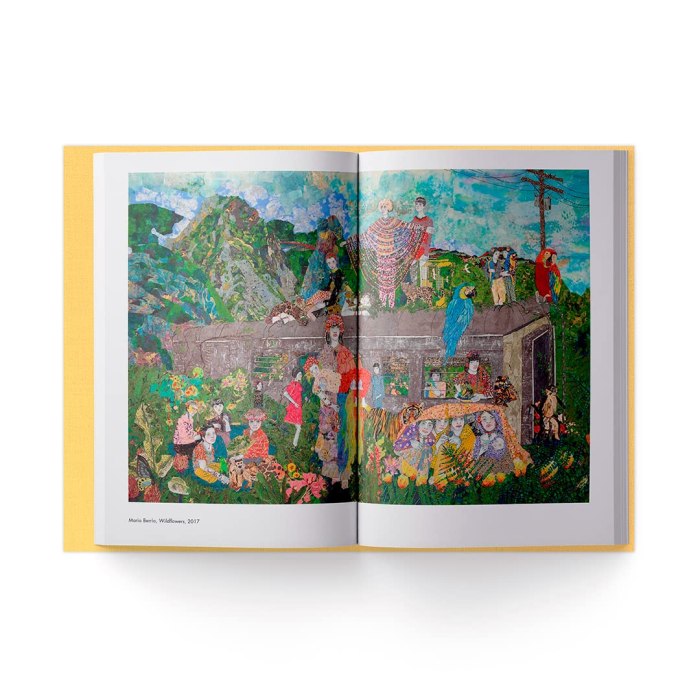
Okay, so you think you know art history, right? Michelangelo, da Vinci, Picasso – the usual suspects. But what about the women who were painting, sculpting, and creating masterpieces right alongside them? They’re the ones who got left out of the story, the ones whose names were erased from the history books.
It’s time to set the record straight and talk about the women who were systematically excluded from the art world.
The Societal Factors That Marginalized Women Artists
Women artists have faced a long and uphill battle for recognition and equality. They’ve been subjected to societal norms that limited their opportunities and silenced their voices. It’s not a coincidence that the art world has been dominated by men.
There were many factors at play, and it’s important to understand them to appreciate the struggles faced by women artists.
- Limited access to education and training:For centuries, women were denied access to formal art education. They were often confined to the domestic sphere, expected to focus on domestic skills rather than artistic pursuits.
- Patriarchal structures and social expectations:The prevailing patriarchal structures of society limited women’s opportunities to exhibit their work and gain recognition. They were often viewed as inferior artists, and their work was dismissed as merely decorative or amateurish.
- The “feminine” and “masculine” divide:The art world, like many other fields, has been heavily influenced by the binary of “feminine” and “masculine.” Women’s work was often associated with “feminine” themes like domesticity, nature, and the body, while men’s work was seen as more “masculine” and serious, focusing on historical narratives, grand themes, and abstract concepts.
This limited the scope of women’s artistic expression and contributed to their marginalization.
Examples of Overlooked Women Artists
There are countless women artists whose contributions to art history have been overshadowed by their male counterparts. Let’s shine a light on some of these incredible women and their remarkable stories:
- Artemisia Gentileschi (1593-1656):This Italian Baroque painter was a trailblazer for women in art. She defied societal norms by becoming a successful artist in a male-dominated field. She was known for her powerful depictions of female strength and resilience, often tackling themes of violence and betrayal in her paintings.
Her work was recognized in her lifetime, but her story is often overshadowed by the more famous male artists of her era.
- Mary Cassatt (1844-1926):This American Impressionist painter is known for her intimate portraits of women and children. She was a close friend of Edgar Degas and exhibited alongside the Impressionist movement. Cassatt’s work challenged traditional notions of femininity and motherhood, showcasing the strength and individuality of women.
- Georgia O’Keeffe (1887-1986):This American modernist painter is known for her bold and abstract depictions of flowers, landscapes, and urban scenes. She was a pioneer of modernism, breaking away from traditional representational styles. O’Keeffe’s work was often interpreted through a lens of sexuality and femininity, which both celebrated and limited her artistic recognition.
Reframing the Narrative
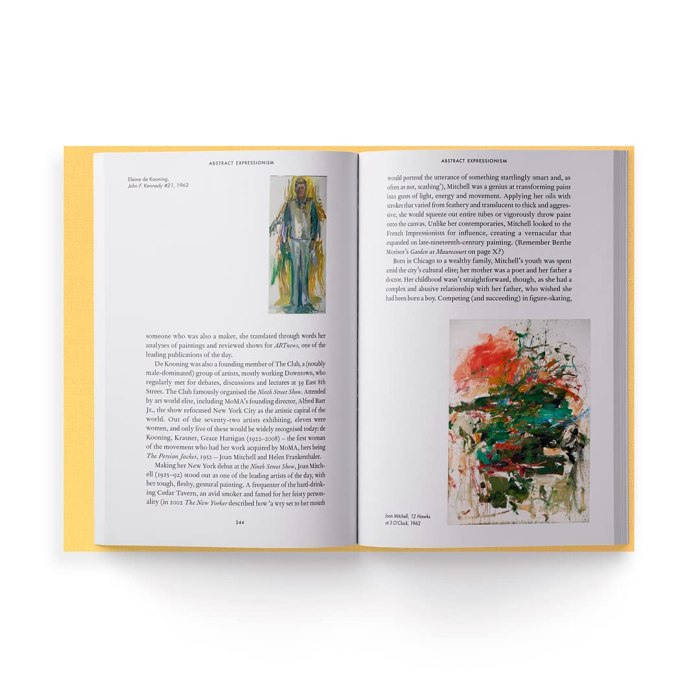
For centuries, the art world has been dominated by a male perspective, leaving the contributions of women artists largely overlooked. This exclusion has shaped our understanding of art history, creating a distorted view of artistic achievements. It’s time to reclaim the narrative and celebrate the brilliance of women artists who have consistently pushed boundaries and redefined artistic expression.
Celebrating Women’s Artistic Voices
The art world is rich with women artists who have carved their own paths, leaving behind a legacy of innovative and impactful works. Here are a few examples:
- Mary Cassatt (1844-1926):Cassatt was a prominent American Impressionist painter, known for her captivating portrayals of women and children. Her paintings, like “The Bath,” showcase the intimacy and tenderness of everyday life, capturing the essence of motherhood and domesticity with a delicate touch.
Cassatt’s works often feature a sense of movement and fluidity, employing pastel tones and soft brushstrokes to create a sense of intimacy and warmth.
- Frida Kahlo (1907-1954):Kahlo’s self-portraits are iconic, exploring themes of identity, pain, and resilience. Her bold use of color, symbolism, and surrealism made her a powerful voice in the art world, challenging traditional representations of women and defying societal expectations.
- Georgia O’Keeffe (1887-1986):O’Keeffe is renowned for her abstract and minimalist paintings, particularly her close-up depictions of flowers. Her works, like “Red Poppy,” capture the beauty and fragility of nature, showcasing her profound connection to the natural world. O’Keeffe’s paintings are known for their sharp lines, bold colors, and emphasis on form, demonstrating her mastery of composition and her ability to translate her personal experiences into powerful visual statements.
- Louise Bourgeois (1911-2010):Bourgeois was a French-American sculptor and installation artist, known for her introspective and often disturbing works. Her sculptures, like “Maman,” explore themes of motherhood, sexuality, and the human condition, reflecting her personal experiences and struggles. Bourgeois’s art is characterized by its raw honesty, challenging viewers to confront their own emotions and confront the complexities of human existence.
Overcoming Obstacles
Women artists have faced significant obstacles throughout history, from limited access to education and resources to societal expectations and discrimination. However, many have defied the odds, achieving remarkable success despite the challenges.
- Artemisia Gentileschi (1593-1656):Gentileschi was a Baroque painter who overcame personal tragedy and societal prejudice to become one of the most acclaimed artists of her time. She was known for her dramatic and emotionally charged paintings, particularly her depictions of strong and independent women.
Her works, like “Judith Beheading Holofernes,” showcase her technical skill and her ability to depict violence and power with equal measure.
- Mary Wollstonecraft (1759-1797):Wollstonecraft was a philosopher, writer, and advocate for women’s rights. She was a pioneer in feminist thought, challenging traditional gender roles and advocating for women’s education and equal opportunities. While not primarily known for her visual art, Wollstonecraft’s writings played a crucial role in shaping the intellectual landscape and paved the way for future generations of women artists.
- Judy Chicago (born 1939):Chicago is a feminist artist known for her large-scale, collaborative installations, such as “The Dinner Party,” which celebrated the achievements of women throughout history. Her work challenged traditional art practices and explored themes of female identity, sexuality, and the history of women’s oppression.
Timeline of Key Moments in Women’s Art History
The evolution of women’s art history is marked by key moments and movements that have shaped their artistic expressions. Here’s a timeline of some of the most significant developments:
- 16th Century:Artemisia Gentileschi emerges as a leading female artist, defying societal norms and achieving critical acclaim for her powerful and emotionally charged paintings.
- 18th Century:Mary Wollstonecraft’s writings on women’s rights and education contribute to a growing intellectual movement that paves the way for future generations of women artists.
- 19th Century:The Impressionist movement provides opportunities for women artists, such as Mary Cassatt, to gain recognition for their unique styles and perspectives.
- Early 20th Century:The rise of modernism and the development of abstract art open new avenues for women artists to express themselves, leading to the emergence of figures like Georgia O’Keeffe and Louise Bourgeois.
- Late 20th Century:The feminist art movement challenges traditional art practices and promotes the visibility of women artists, leading to the rise of figures like Judy Chicago and Cindy Sherman.
The Impact of “The Story of Art Without Men”
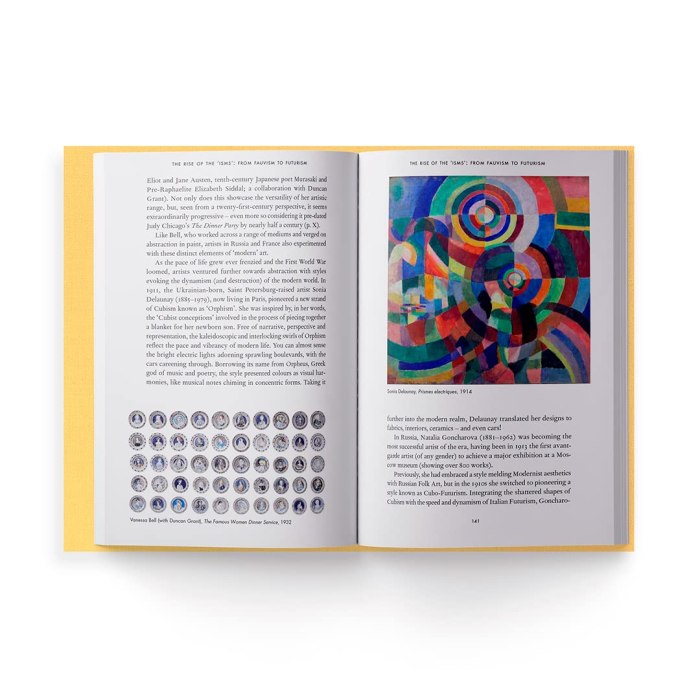
Reframing art history through a feminist lens is like putting on a pair of rose-colored glasses, but instead of everything looking rosy, you suddenly see a whole new world of artistic talent that has been hidden in plain sight. This shift in perspective allows us to appreciate the contributions of women artists, challenging the traditional narrative that has often marginalized their voices and achievements.
The Inclusion of Women’s Voices
By incorporating the perspectives of women artists, we gain a deeper understanding of the social and cultural contexts that shaped their work. Their experiences as women, often navigating a world dominated by men, influenced their artistic choices and themes. This enriched understanding of art history goes beyond just recognizing women artists as mere footnotes in the grand narrative.
It’s about acknowledging their unique voices and the profound impact they had on the evolution of artistic movements.
The Contributions of Women Artists Across Art Movements
The impact of women artists on art history is undeniable. Their contributions spanned across various art movements and periods, shaping the landscape of artistic expression. Here’s a table showcasing the impact of some notable women artists:
| Art Movement | Artist | Contribution |
|---|---|---|
| Renaissance | Sofonisba Anguissola | Known for her realistic portraits and her skill in depicting the human form. She was one of the first women to achieve recognition as a professional artist. |
| Baroque | Artemisia Gentileschi | Known for her dramatic and emotionally charged paintings, often depicting themes of female strength and resilience. Her work challenged the traditional gender roles of the time. |
| Impressionism | Mary Cassatt | Known for her paintings of women and children, capturing intimate moments of domestic life. Her work helped to redefine the role of women in art. |
| Modernism | Georgia O’Keeffe | Known for her large-scale paintings of flowers, landscapes, and cityscapes. Her work explored themes of nature, sexuality, and the American landscape. |
| Abstract Expressionism | Lee Krasner | Known for her abstract paintings, often characterized by bold colors and dynamic compositions. She was a major figure in the Abstract Expressionist movement. |
Book Review: “The Story of Art Without Men”
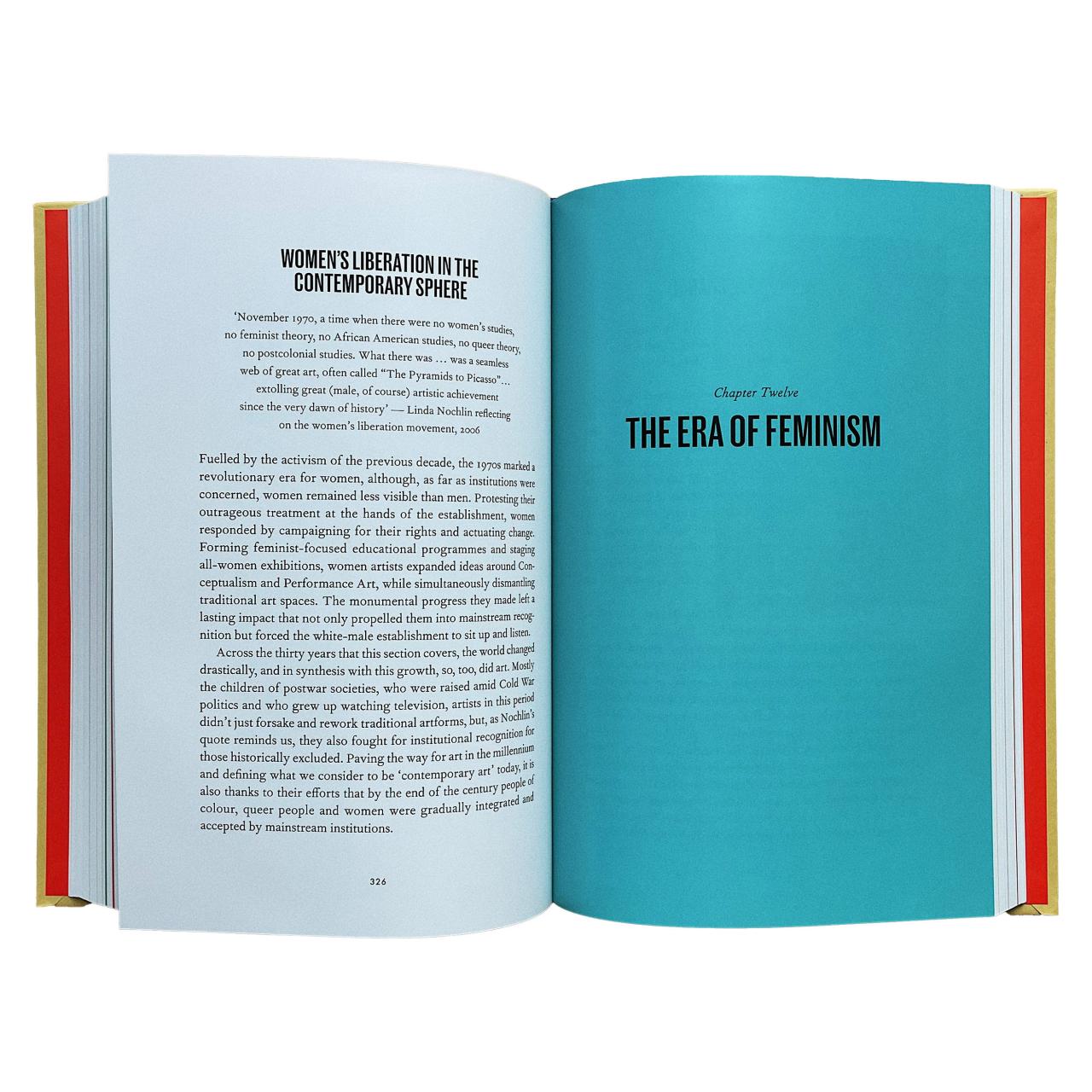
“The Story of Art Without Men” is a groundbreaking exploration of art history, one that dares to rewrite the narrative by centering the voices and contributions of women artists. The book delves into a vast tapestry of creative expression, revealing a world of artistic talent that has been largely overlooked and underappreciated.
The Book’s Strengths and Impact
The book’s strength lies in its meticulous research and compelling storytelling. It challenges conventional art historical narratives by showcasing the achievements of women artists across various periods and movements. The author’s insightful analysis and vivid descriptions bring these artists and their works to life, prompting a reassessment of our understanding of art history.
The Book’s Central Arguments
“The Story of Art Without Men” argues that the traditional canon of art history has been systematically biased against women artists. The book presents a convincing case that the exclusion of women from art historical narratives is not simply a matter of oversight, but a deliberate attempt to maintain a patriarchal power structure within the art world.
The Book’s Potential Impact
“The Story of Art Without Men” has the potential to revolutionize art historical studies and the representation of women artists. By highlighting the contributions of women artists, the book challenges us to rethink our assumptions about artistic talent and creativity.
Its impact can be seen in the growing number of exhibitions, publications, and academic studies that focus on women artists.
Closing Notes
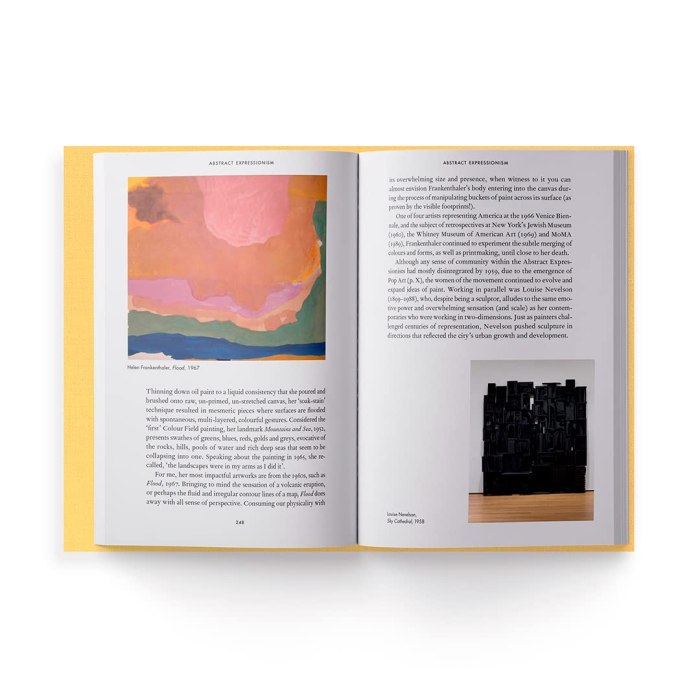
Think of it like this: Imagine your favorite band, but without the lead singer. That’s what art history has been for centuries. “The Story of Art Without Men” puts the spotlight back on the incredible women artists who have always been there, rocking the stage and changing the game.
It’s a journey through time, a celebration of talent, and a reminder that art is truly a reflection of the world, not just the male perspective. So, get ready to dive into a whole new world of art history, where women artists finally get their due.
Key Questions Answered
Is “The Story of Art Without Men” a book?
Yes, “The Story of Art Without Men” is a book that explores the history of art from a feminist perspective.
Who are some of the key women artists highlighted in the book?
The book covers a wide range of women artists from different eras and movements, including but not limited to Artemisia Gentileschi, Mary Cassatt, Frida Kahlo, and many more.
What are some of the challenges women artists have faced throughout history?
Women artists have faced a variety of challenges, including limited access to education and training, societal expectations that limited their artistic pursuits, and lack of recognition and opportunities for exhibition and sales.
How can “The Story of Art Without Men” impact future art historical studies?
The book encourages a more inclusive and diverse understanding of art history, highlighting the contributions of women artists and promoting a more balanced and nuanced view of artistic development.

